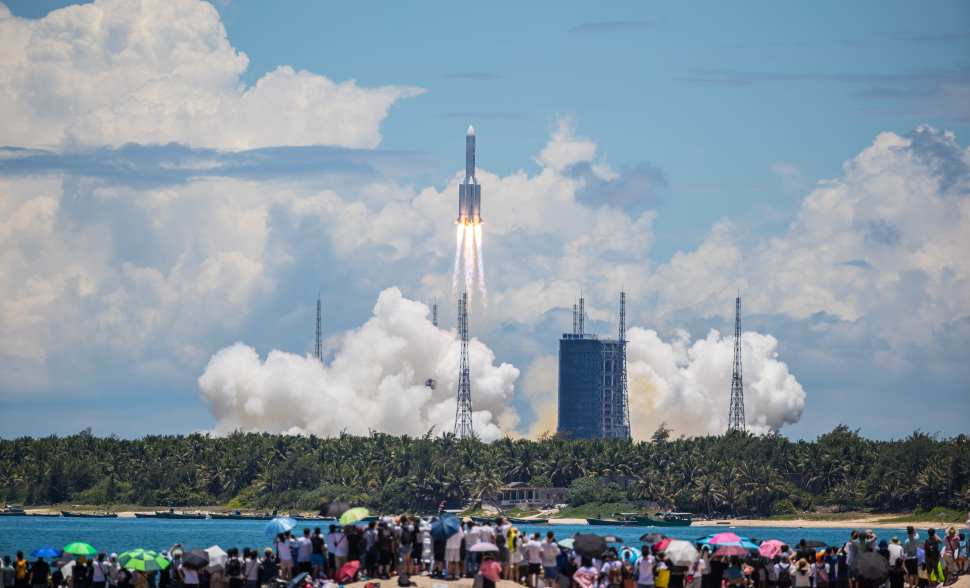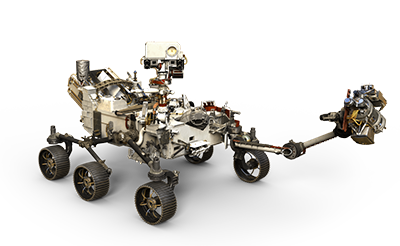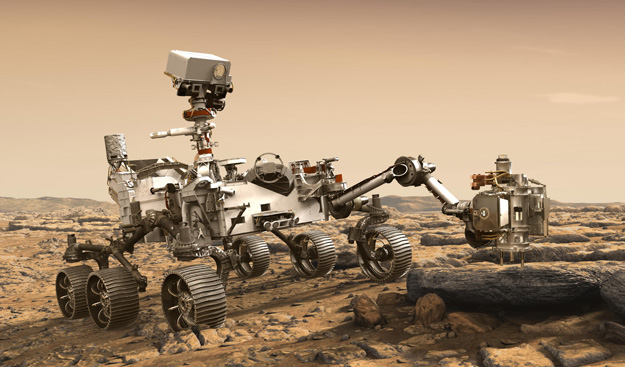NASA allows you to 3D print your own mini Perseverance
United Arab Emirates (UAE) ,China, and the United States, all launched their Mars missions at the start of the second half 2020, rekindling the masses’ interest in outer space exploration.
Despite being the last in launching its Mars mission, NASA(the National Aeronautics and Space Administration of the Unite States ) has taken the lead in releasing 3D-printable data for its Mars Rover “Perseverance” and “Ingenuity Mars Helicopter”,allowing 3D printing hobbyists to download the print-ready STL files and print their own Perseverance.. Download the models here.

photo via oberver.com
After a successful launch on July 30, NASA’s Mars 2020 Perseverance rover is on its way to the Red Planet to look for signs of ancient life and collect rock samples to send back to Earth. Nearly a decade in the making, the 10-foot-long rover is packed with some groundbreaking technologies, instruments and advanced computing capabilities that enables it to land on Mars and survive the cold Martian nights.Unlike its four predecessors, this is the largest and heaviest robotic rover ever built by NASA, and space enthusiasts are enthralled.
Pre-launch events were packed to capacity, with people of all ages from around the world participating in behind-the-scenes observations of the rover, immersive augmented reality virtual tours, 3D visualization of the mission’s scientific instruments, and even the chance to 3D-print a full-size replica of Perseverance.
Make your own mini, simplified “Perseverance”
Engineers at NASA’s Jet Propulsion Laboratory (JPL) who built the probe have released the STL files and assembly instruction. This is the 110th 3D-printable model NASA has made available to the public.It includes everything from Saturn rockets and ISS tools to Orion capsules and even landing sites for many Apollo missions.To make a mini Perseverance, users need to 3D print 39 parts, many of which require multiple prints, and then have them assembled. All the sub-components are available, including the mobile and manipulator arm, chassis, wheels and radioisotope thermoelectric generator (RTG).

Nearly a decade in the making, the Mars 2020 mission vehicle weighs more than a ton and carries seven scientific payloads, a robotic arm, the Ingenuity Mars Helicopter, 25 cameras and the first microphone to record sound on the Red Planet.
Some of the main parts in the car-sized Mars rovers, such as the cruise stage, descent stage, rear shell and heat shield, were built on the success of NASA’s Curiosity Rover– part of the Mars Science Laboratory mission.
The nuclear-powered Mars rover is NASA’s ninth mission to Mars and the first since the 1970s’ Viking program aiming to find evidence of life on Mars. Before landing in Jezero Crater, a massive basin north of the equator on Mars, the spacecraft will travel 290 million miles over a cold, dark and relentless seven-month journey on a United Launch Alliance (ULA V) rocket launched from Cape Canaveral Air Force Base in Florida.

2020 turns out to a very busy year in space, with dozens of missions to orbit the moon and Mars.In addition to the United States, there are two other interplanetary missions to Mars: the United Arab Emirates’ Hope, launched on July 14, will study the Planet’s atmosphere and climate; and the recent launch of China’s first ever fully homegrown spacecraft, Tianwen 1. Currently, all missions are on their way and are expected to arrive in February 2021.
The Perseverance’s astrobiology mission is to look for signs of past microbial life on Mars, explore the diverse geology of its landing site, and demonstrate key technologies that will help future robotic and human exploration.While most of Perseverance’s seven instruments are designed to learn more about the planet’s geology and astrobiology,the MOXIE(Mars Oxygen In-Situ Resource Utilization Experiment) instrument is focused on upcoming missions, according to NASA.Designed to prove that it’s possible to convert Martian carbon dioxide into oxygen, it could lead to future versions of MOXIE technology that could become staples in Mars missions, supplying oxygen to rocket fuel and breathable air.

Deep space exploration is still one of the most alluring undertakings.Missions like The Perseverance and others before it have intrigued millions of people.Today, with the help of 3D printing, you can recreate these probes at home. It has proven to be a great tool for engaging students and educators in space-related activities, aiding them in understanding remote terrains, spacecraft engineering and etc.
Source:ofweek.com; astrobiology.com; NASA